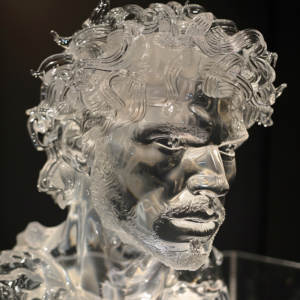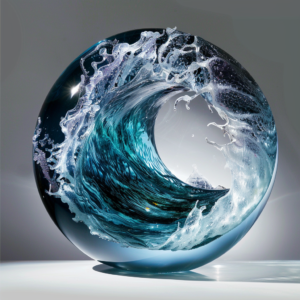Glass sculpting, with its fiery dance and transformative power, allows artists to express themselves in unique and captivating ways. However, unlike other artistic mediums, glass sculpting can be subject to regulations and laws that may seem unexpected. Let’s delve into the legalities surrounding glass art, exploring the potential restrictions you might encounter.
The Focus: Safety Concerns and Public Protection
The primary concern behind regulations related to glass sculpting is safety. Glass, despite its beauty, can be fragile and potentially dangerous if not handled properly. Regulations often focus on:
- Studio Safety: Studios may be required to adhere to specific safety protocols regarding ventilation, fire safety, and proper storage and handling of hazardous materials used in glass sculpting, such as propane and certain chemicals.
- Public Safety: In some cases, regulations may dictate the structural integrity and stability of large-scale glass sculptures displayed in public spaces. These regulations ensure the safety of people interacting with or viewing the artwork.
- Product Safety: If your glass sculptures are intended for functional use (think goblets or bowls), additional regulations may come into play. These regulations ensure the glass meets specific safety standards regarding lead content, heat resistance, and overall durability.
The Enforcer: Zoning Regulations and Local Permits
Depending on your location and the nature of your glass sculpting operation, you might encounter regulations from various entities:
- Zoning Regulations: If you operate a glass sculpting studio from your home, zoning regulations might dictate permissible activities within residential areas. Obtaining a permit or ensuring your studio meets specific fire safety and noise control standards might be necessary.
- Building Permits: Large-scale glass sculptures intended for permanent public display might require building permits and approval from local authorities. These permits ensure the structural integrity of the artwork and its compliance with safety regulations.
- Business Licenses: If you plan to sell your glass sculptures, you might need to obtain a business license depending on your location and the scale of your operation.
The Unexpected: Environmental and Health Concerns
In some rare instances, regulations might address environmental and health concerns related to glass sculpting:
- Waste Disposal: Regulations might dictate the proper disposal of glass scraps and cullet (crushed glass used in sculpting) to minimize environmental impact.
- Lead Content: Lead was historically used in some glassmaking processes. If you’re working with vintage glass or using certain techniques, regulations might require specific safety measures to minimize exposure to lead dust.
The Importance of Research and Collaboration
Understanding the legal landscape surrounding glass sculpting is crucial. Here’s how to navigate the regulations effectively:
- Research Local Regulations: Start by researching regulations in your specific area. Contact your local building department, zoning office, and environmental protection agency to understand any applicable permits or safety protocols.
- Seek Expert Advice: Consider consulting with a lawyer specializing in art law or a safety professional experienced with glass studios. They can provide tailored guidance based on your specific circumstances.
- Collaborate with Studio Owners: If you’re working in a shared studio space, inquire about existing safety protocols and regulations the studio adheres to. This ensures everyone’s safety and compliance with local laws.
Conclusion: Balancing Creativity with Safety
Regulations surrounding glass sculpting are not meant to stifle artistic expression but rather to ensure a safe environment for artists and the public. By understanding the legalities and working within the framework, you can focus on creating captivating glass sculptures while maintaining compliance and contributing to a safe and responsible art practice. Remember, a little research and collaboration can go a long way in ensuring your artistic journey with glass is both creatively fulfilling and legally sound.



